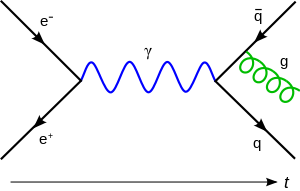Kate Rauner's Blog, page 106
August 25, 2013
Europa May Be the Best Place to look for Neighbors
 A new science fiction movie, Europa Report, is out this summer. Early reviews say the movie makers have tried to present a realistic depiction of this Jovian moon. In real life, NASA is trying to develop a cryobot that could penetrate Europa’s ice-covered surface and search for life. Reports have said that Europa’s ocean could harbor life, and some have theorized that it is the most likely place to find life in the solar system. Life on Earth in deep ocean vents could offer a model of life in Europa. The tidal forces Jupiter creates in its moons would offer plenty of energy for chemosynthetic life to exist far removed from sunlight.
A new science fiction movie, Europa Report, is out this summer. Early reviews say the movie makers have tried to present a realistic depiction of this Jovian moon. In real life, NASA is trying to develop a cryobot that could penetrate Europa’s ice-covered surface and search for life. Reports have said that Europa’s ocean could harbor life, and some have theorized that it is the most likely place to find life in the solar system. Life on Earth in deep ocean vents could offer a model of life in Europa. The tidal forces Jupiter creates in its moons would offer plenty of energy for chemosynthetic life to exist far removed from sunlight.

Earthly deep ocean vent
Robotic missions don’t seem to be exciting enough for Hollywood movies, but I would love to see a real cryobot submersible swimming through Europa’s oceans searching for life. That would be exciting enough for me, especially if the mission found life.








August 21, 2013
My Boots – a Poem
My Boots
By Kate Rauner
Push my foot snug in the shell of the toe,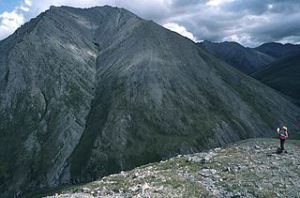
Shove my heel in with a ‘schloop’ as it goes.
Laces clip-clipping thru D-rings of brass
And hooked through an open-backed rivet at last.
Taut but not tight, criss-crossed on the tongue
To hold each foot safe once the travel’s begun.
Walking through embers or wading thru floods,
Across boulder fields or curls of dried mud,
Meadows of flowers and valleys of grass,
A wind-blasted saddle, a steep mountain pass.
Pounding a cadence, my feet keeping time
Through miles of thoughts and hours of rhyme.
The beat of my heart is the rhythm of words.
Hiking’s a metronome
Felt more than it’s heard.








August 17, 2013
Phoenix Rising – a Fantasy Book Review
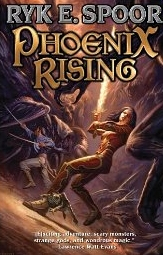 Science Fiction and Fantasy seem to overlap, so I’m posting this review.
Science Fiction and Fantasy seem to overlap, so I’m posting this review.
Phoenix Rising, Ryk E Spoor’s book is not exactly part of a series, but the Afterword says other books have been set in this fantasy world of magic. The first five chapters were hard for me to get through. There are so many characters introduced, each with more than one name or title, and three story-lines of which two seemed like fairly typical sword and magic fantasies. I almost gave up on the book. Then I got to the third story line which features an intelligent toad named Poplock. This idea seemed fresh and the writing lighter. About half way through the 400 page book, there was a nifty plot twist that added a fourth story line that I liked.
Those early chapters led me to this approach: Read a chapter of Poplock’s story; then search thru the ebook for the next time his name appears and read that chapter. (E-books give me a lot of control; I can also search for the first time a character appeared if I forget who they are.) Two of the story lines converged fairly soon and I never missed the skipped portions of that third story line, which joined up with Poplock in the last 100 or so pages. There are plenty of open plot threads for a sequel. I finished the book and mostly enjoyed it. I don’t think I will look for the sequel though.








August 14, 2013
Storm Clouds – a Poem
I Love Storm Clouds
By Kate Rauner
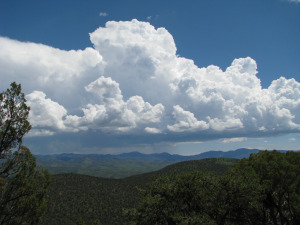
Clouds over Black Range by Kate Rauner
Powered by sunlight that traveled thru space,
Tumbling upwards on a heavy wet base,
Warm air and cold air parcels collide,
Dynamics and moisture heaped in the skies,
Piled by mountains above the terrain,
Clawing the ground with fingers of rain,
Strong sudden downdrafts spread out below
Bending the trees in cooling outflow,
Pouring down energy, all through the night
Measuring distance with thunder and light.
I love storm clouds.








August 11, 2013
Robotic Cars Are Coming
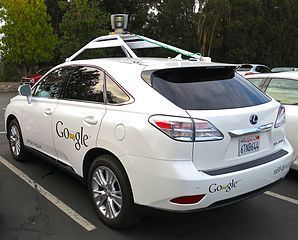 Forbes hypothesizes that self-driving cars, what Google calls robotic cars, will arrive in three phases. First, what I think of as the “toy phase”: Over the next ten years, a small percentage of cars will be self-driving, but laws will require a licensed driver to be ready, hands-on-the-wheel, to take over. Next, about thirty years from now, laws will catch up with technology, so you can be drunk in the backseat, or send your kid to grandma’s house by himself; but most cars will still be privately owned. Finally, farther in the future, the transportation cloud will emerge. Cars will be entirely autonomous and few people will own one: Most cars will be robotic taxis.
Forbes hypothesizes that self-driving cars, what Google calls robotic cars, will arrive in three phases. First, what I think of as the “toy phase”: Over the next ten years, a small percentage of cars will be self-driving, but laws will require a licensed driver to be ready, hands-on-the-wheel, to take over. Next, about thirty years from now, laws will catch up with technology, so you can be drunk in the backseat, or send your kid to grandma’s house by himself; but most cars will still be privately owned. Finally, farther in the future, the transportation cloud will emerge. Cars will be entirely autonomous and few people will own one: Most cars will be robotic taxis.
I hope the Forbes time line is pessimistic. Some stories support Forbes. Others covering the same news offer more hope. Everyone thinks the laws will lag behind the technology. That is hardly a new phenomenon.
Like all technological advances, Forbes suggests robotic cars will change society. People will be able to travel more quickly and driving time will be free time, which will lead to an outflow of people from cities. Robotic cars are “going to change everything / be unbelievably disruptive to basically every business that sells atoms to consumers,” a real earth-shaker. Short-hop airplane flights will disappear. People won’t care much about a car’s looks – how much do you care what a taxi looks like? So manufacturing will take a hit and not just car manufacturing. People will buy less stuff of all sorts since rented items will arrive quickly and conveniently, right to your door, via robotic delivery.
looks – how much do you care what a taxi looks like? So manufacturing will take a hit and not just car manufacturing. People will buy less stuff of all sorts since rented items will arrive quickly and conveniently, right to your door, via robotic delivery.
There is some worry that people will not accept cars that drive themselves. People perceive higher risk when they have less control or when a risk is new to them. But people downplay the risks they choose to take voluntarily, or when they see a big benefit. I think people will accept robotic cars as easily as they accept flying.
I don’t know what will happen to society. It’s tough to make predictions, especially about the future. All I know is: I want a robotic taxi and I can’t wait fifty years. Hurry up, future.








August 7, 2013
Reality’s a Mess – a Poem
Thanks to Isaac Asimov’s inspiration for kicking off this poem.
Reality’s a Mess
By Kate Rauner
A sphere is the most perfect shape
But Earth’s an oblate pear.
Beautiful orbits are circular but ellipses are what’s there.
A species should be distinct,
Breed true, you must concur.
But as lineages move through time distinctions start to blur.
The speed of light is constant,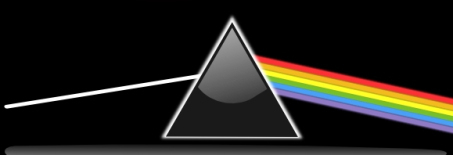
As every student knows,
But that’s only in a vacuum or we wouldn’t have rainbows.
Nuclear forces strong and weak
With charged particles unite.
By when will gravity join in and stop the physics fight?
Perfection is what’s beautiful
But reality stands the test.
Reality will always win, and reality’s a mess.








August 2, 2013
Astronomer’s Top Ten Sci-Fi List
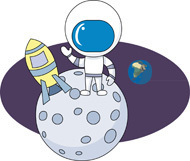 Find an astronomy professor’s Top Ten Sci Fi list at http://bit.ly/13O5CxL
Find an astronomy professor’s Top Ten Sci Fi list at http://bit.ly/13O5CxL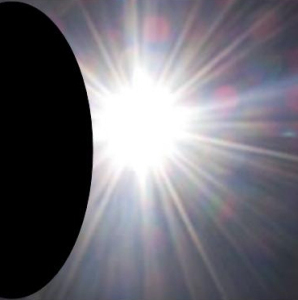
Mike says “I worry that the classification ‘Hard SF’ is off-putting to many readers. It makes it sound like any story labeled as such will be hard to understand, which is not necessarily true. ‘Hard’ is really just a term to refer to the fact that we can be quantitative about some scientific topics.” I’ve seen other definitions that contrast hard science fiction with fantasies: Hard science fiction says “this could really happen.” That definition may impose some limitations on authors, but what constitutes “technology so advanced it seems to be magic” and what constitutes fantasy varies from book to book. How much the author chooses to explain the science versus how much is simply presented varies, too.
Check out Mike’s list for some good reading.








July 31, 2013
Empty Space – a Haiku
Empty Space – a Haiku
By Kate Rauner
Space between planets
Dark empty void that is full
Gluons and wonder








Detroit May Be Blazing a Trail for Us All
 Detroit has been in the news because of its looming bankruptcy. Certainly the flight of manufacturing from America’s Rust Belt, poor city management, and crime all contribute to its decline. But at the root of the city’s woes is a loss of population.
Detroit has been in the news because of its looming bankruptcy. Certainly the flight of manufacturing from America’s Rust Belt, poor city management, and crime all contribute to its decline. But at the root of the city’s woes is a loss of population.
I wonder if Detroit is a window into the future. I have posted before about predictions that the total world population will top out and begin to decline within this century and maybe within a lifetime. One interesting article says “we are now exactly in the middle of perhaps the greatest demographic change in recorded history… It’s entirely possible that in little more than a generation world population will stop growing, and that our children will live to see a planet with many millions, maybe a billion, fewer people on it than there are now.”
Our nation’s municipal plans and most of our economy are based on an assumption that increasing population will drive increasing consumption. It is hard to fault people for making this assumption. Even allowing for significant set-backs like the Black Death, the human population has generally been increasing for the past 70,000 years. If the world’s population drops as predicted, everyone reading my words will live through a difficult period as the slug of elders works its way through. Posterity will then emerge into a new world.
Detroit and other shrinking American cities could be writing the script for our future. An article in Slate says “in principle the  decline of Detroit could be slowed by literally making the city smaller and its population larger… This raises ‘really tricky legal-type questions’ about the permissible scope of eminent domain law… Abandoning whole areas of the city and forcibly relocating families into currently vacant structures closer to the core would be a drastic step, but… it would allow Detroit to provide much better services to a new, smaller city.”
decline of Detroit could be slowed by literally making the city smaller and its population larger… This raises ‘really tricky legal-type questions’ about the permissible scope of eminent domain law… Abandoning whole areas of the city and forcibly relocating families into currently vacant structures closer to the core would be a drastic step, but… it would allow Detroit to provide much better services to a new, smaller city.”
Assumptions that held for 70,000 years are failing. Humanity is choosing a path forward, whether we realize it or not.








July 27, 2013
The Solar Forge – a Poem
The Solar Forge
By Kate Rauner
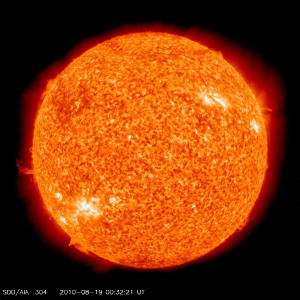
Solar Dynamics Observatory
A hundred Earths would fit across the sphere
except they’d boil away.
The energy of life blasts out, hurled
into space, and will for eons untold.
Earth catches a drop in her blue hands and molds
our world.
Geysers surge in jets and waves and looping flares,
hotter than any gas.
Human hands blend metals forged in flame.
Only the Sun transmogrifies
in a forge with protons, neutrons; which lie beyond my eyes.
I only say their names










